Singapore Laksa
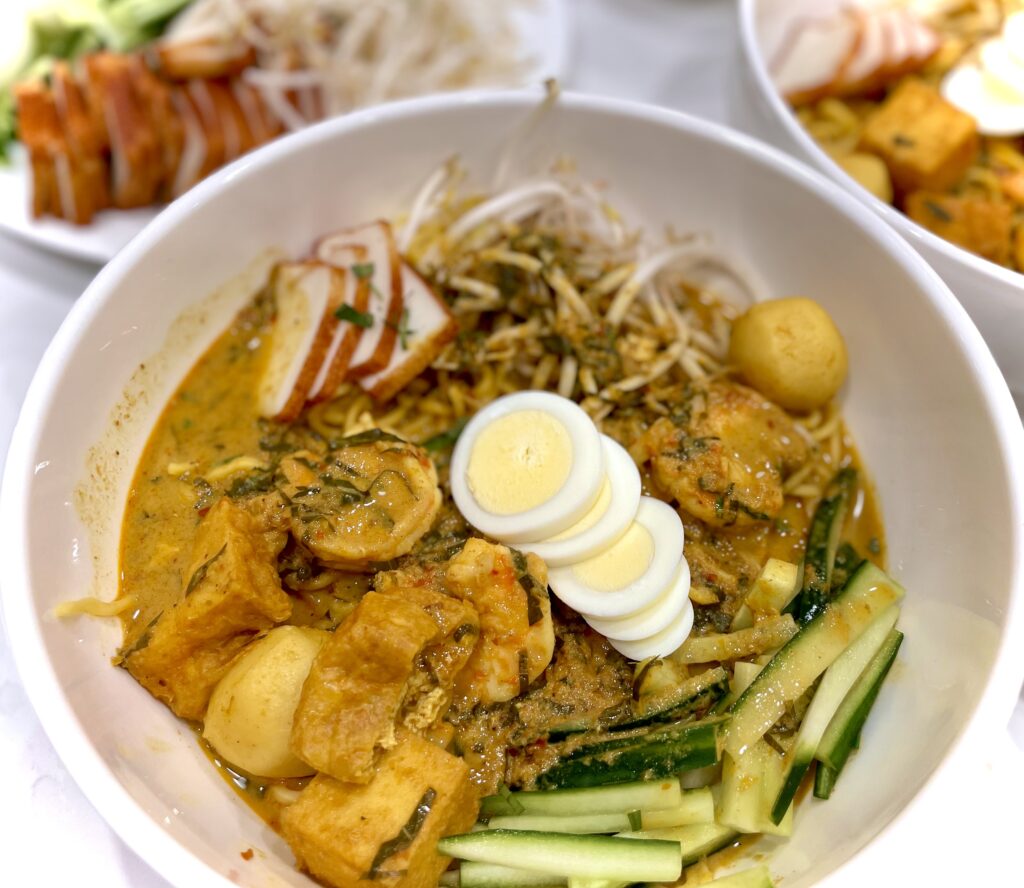
What Is Laksa?
There are few things in the world that bring me as much joy and comfort as a well-made bowl of Singapore Laksa. From the first whiff of its rich aroma to the last, satisfying slurp of noodles, this dish is a dish that I cherish each and every time I have the privilege of enjoying it. Above all, the heat of the spice is perfectly offset by the creamy coconut milk. Meanwhile, the delicate seafood flavours dance across my palate, tantalizing my taste buds with each bite.
But it’s not just the taste of this dish that I love; it also holds a special place in my heart because it reminds me of childhood memories in my mother’s kitchen. Appreciating the beauty of food, it can truly transport us to another time and place. This unique ability enriches our experience, while nourishing and satisfying us in the present. And for that reason, Singapore Laksa will always be a beloved comfort food for me and my family.
The History Of Laksa
This spicy noodle soup is a must-try dish for foodies around the world. Renowned as a Southeast Asian delicacy, it is known for its amazing aroma and flavours that make your taste buds dance with joy. Given its incredible taste and popularity, it’s no wonder that there’s a debate about the origin of this dish. Regardless of who made it first, what matters most is how much we all love it!
Specifically, Singapore’s variant, known as Katong or Curry Laksa, has made a significant contribution to the Laksa scene. Notably, Katong Laksa is now a landmark in Singapore’s culinary history, with the first hawker selling it in the area during the 1960s. Ever since then, it has been a well-loved dish among Singaporeans and the rest of the world. Beyond its popularity, Laksa’s rich history and diverse adaptations make it a culinary treasure that should not be missed. Most importantly, be sure to try it wherever you go in Southeast Asia and beyond!
Making It From Scratch
When making this dish from scratch, there are three key elements you’ll want to keep in mind to achieve that perfect balance of flavours. Firstly, there’s the rempah, a tasty blend of spices that includes turmeric, ginger, lemongrass, garlic, and chilies. Moving on, we’ve got the prawn stock, which adds a rich umami flavor to the soup base. Last but not least, there’s the sambal, a fiery chili paste that’ll give your dish just the right amount of heat. By combining these three essential components, you’ll be well on your way to experiencing the amazing flavours of a truly authentic bowl of laksa. So, let’s get cooking and taste the adventure!
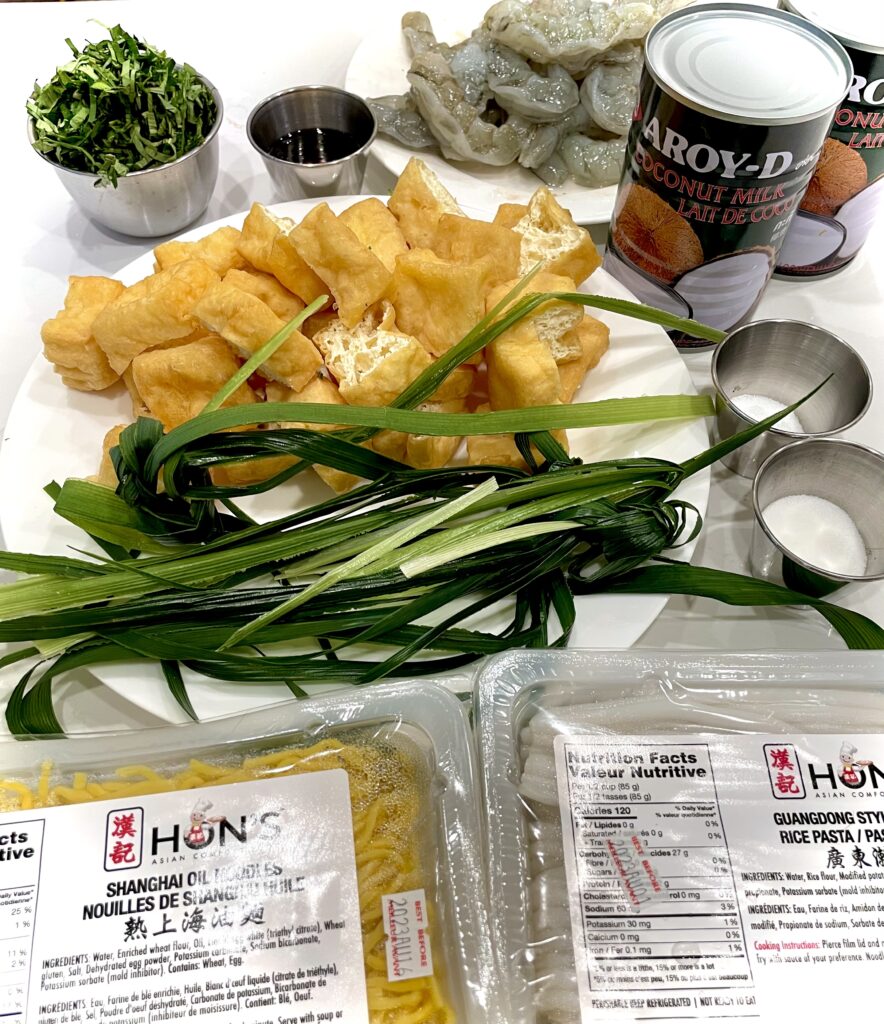
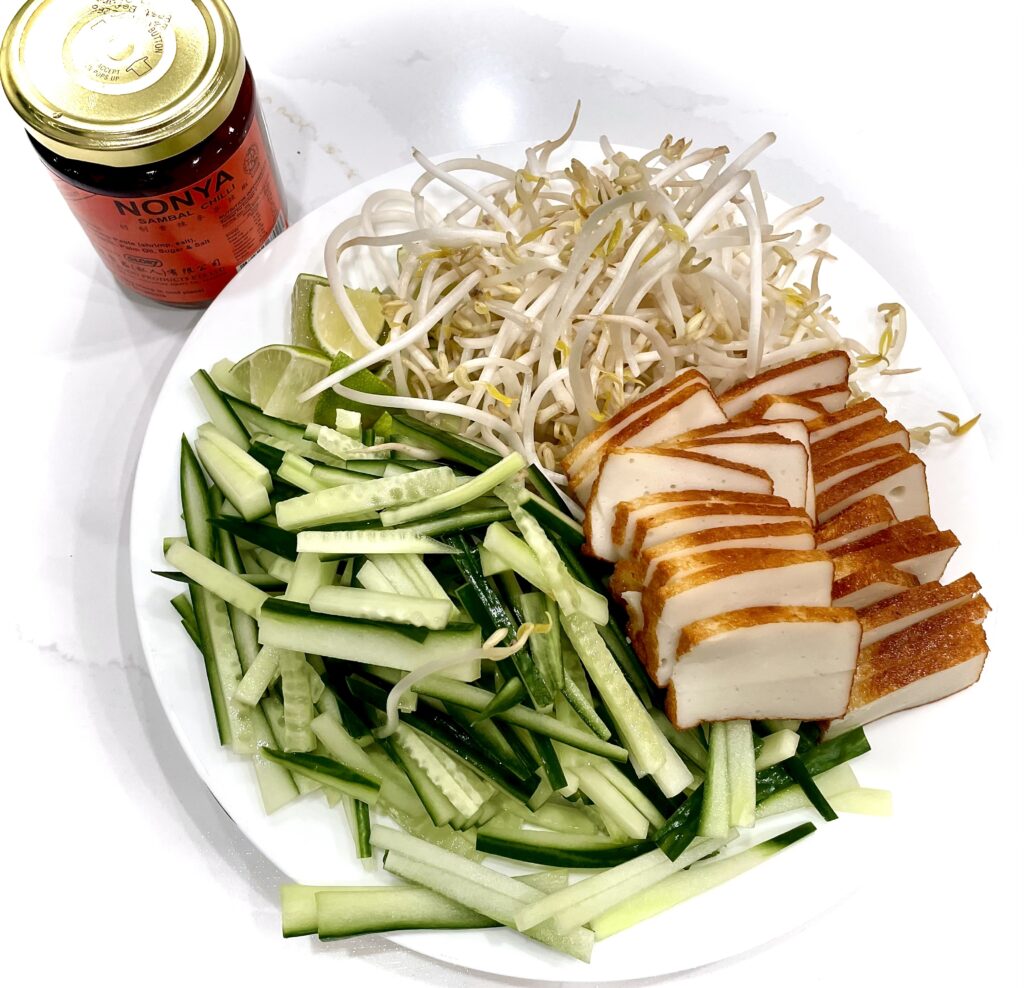
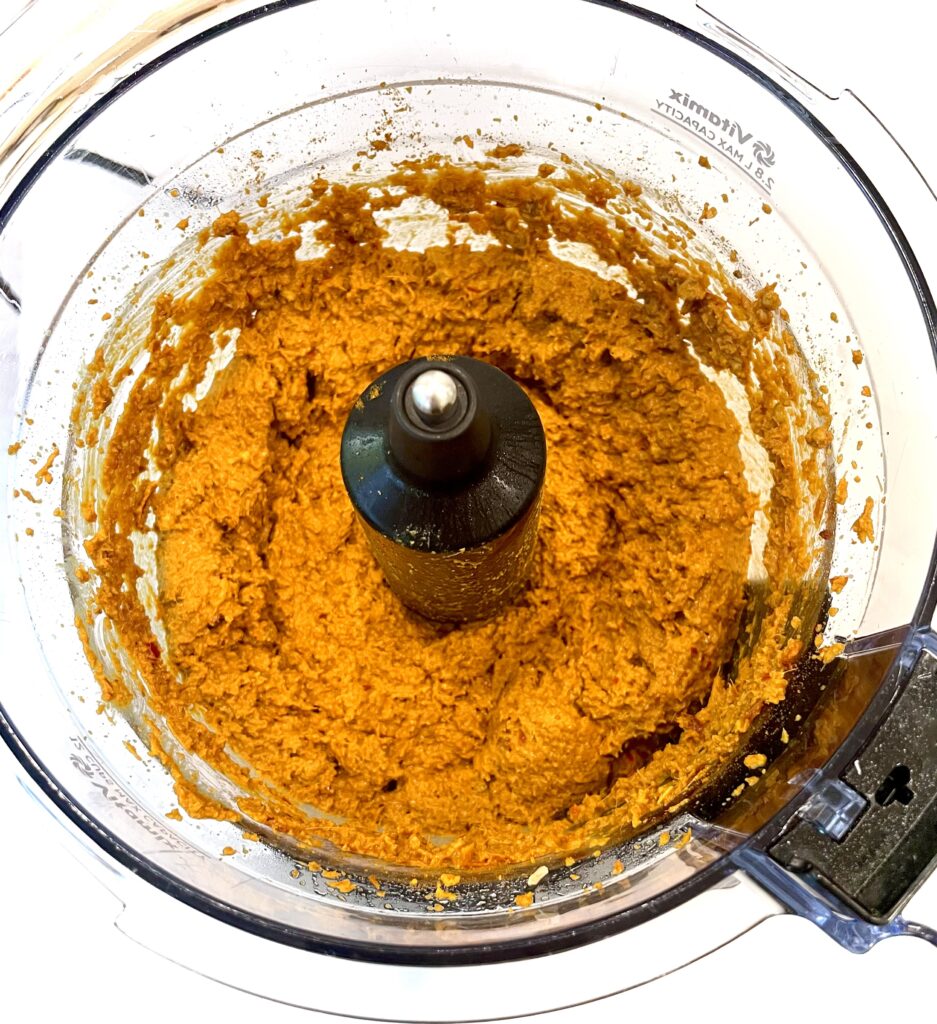
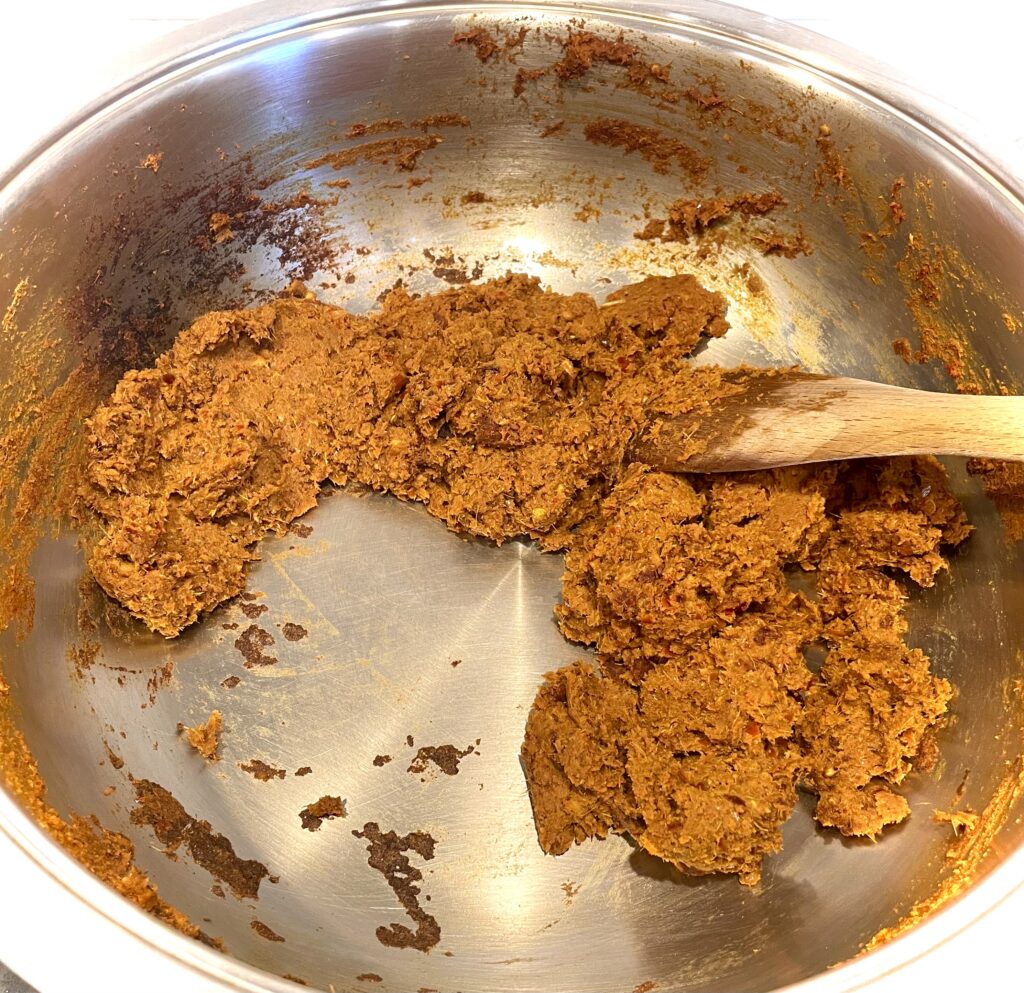


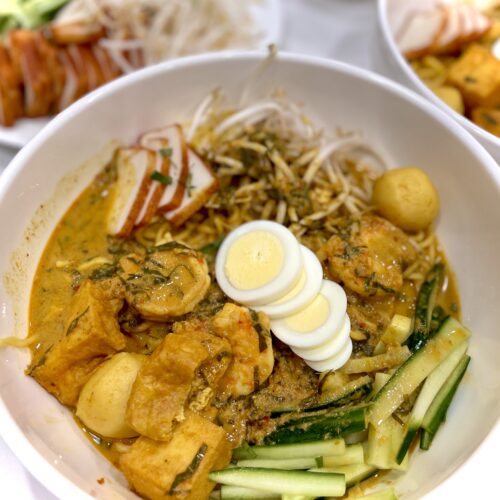
Singapore Laksa Recipe
Ingredients
Rempah (Spice Paste)
- 270 g shallots peeled and halved
- 6 garlic cloves peeled and halved
- 15 dried red chillies deseeded and soaked in hot water until softened
- 4 Thai red chilli deseeded
- 70 g belacan shrimp paste, roasted
- 80 g dried shrimp soaked
- 85 g lemongrass stalks bruise with back of knife and then slice the bottom third into rings
- 85 g ginger peeled and thickly sliced
- 80 g galangal
- 25 g tumeric root
- 25 g candle nuts or cashews
- 20 g coriander seeds toasted and ground in a spice grinder
- 70 g Red chilli powder Baba’s red chilli powder
- 80 ml canola oil
Prawn Stock
- 60 ml canola oil
- prawn shells and heads
- 3 L water
- 800 ml chicken stock
Laksa Soup
- 3 pandan leaves shredded and knotted
- 50 g laksa leaves cut into thin strips
- 800 ml coconut milk full fat
- 1.5 tbsp sugar
- 3 tbsp fish sauce
- 2 tsp salt or to taste
- 200 g deep fried tofu sliced
- 100 g fish balls
- 600 g prawns peeled and deveined
- 600 g guangdong style lai fen noodles
- 500 g fresh Shanghai yellow noodles or dried yellow noodles
Garnish
- 0.75 cucumber julienned
- 1.5 lime wedges
- 400 g bean sprouts
- 5 hard boiled eggs halved
- 400 g fish cake pan fried and then thinly sliced
- sambal or chilli paste to taste optional
Instructions
Rempah (Spice Paste)
- Boil dried red chillies in a pot until softened. Remove chillies and let them cool. Once cool deseed dried and fresh red chillies.
- Toast the belacan in a pan for a few minutes.
- Grind all rempah ingredients (except oil) in a motar and pestle or food processor until as fine as possible.
- Heat a pot on medium. Once hot, heat oil in the pot.
- Add rempah to the pot and fry the paste on low heat until aromatic and until the rempah darkens and oil separates from the rempah (approximately 15-20 minutes).
- Remove rempah and cool, keep tossing rempah to avoid burning.
Prawn Stock
- Peel prawn shells and heads and set aside.
- Using the same pot, heat oil on medium high. Add the prawn shells and heads to the wok and sauté prawn shells and heads until fragrant (approximately 10 minutes).
- Add the water. Let the prawn stock simmer for 1 hour.
- Strain prawn shells and heads from the prawn stock and discard the shells and heads. Add prawn stock back into the clean pot.
Laksa Soup
- Add the rempah paste and the chicken stock to the prawn stock slowly. Add the pandan leaves, laksa leaves (save some laksa leaves for garnish), coconut milk, sugar, fish sauce and salt. Bring to a boil.
- Add the prawns, deep fried tofu, fish cake and fish balls to the soup. Simmer for 5 minutes.
Garnish
- Cook the beehoon and fresh yellow noodles until el dente.
- Add noodles and garnish into a bowl and ladle soup overtop. Garnish with some laksa leaves. Bon appetite!
Pinterest-p
Please rate and share your thoughts this recipe. Your feedback helps us improve!
Would you like to see more recipes like this? Check out my other recipe posts here!
This recipe tastes very authentic and it turned out delicious! Love the way the fried tofu soaks up the rich broth in this dish.
Thank you for sharing.
Thank you so much for trying my recipe! I am so glad you enjoyed it
I’ll immediately snatch your rss feed as I can’t to find
your e-mail subscription hyperlink or newsletter service. Do you’ve any?
Kindly allow me realize in order that I may subscribe.
Thanks.
Hi Corey! Thank you for your comment. I don’t yet have a newsletter so greatly appreciate you saving my rss feed!
I have been browsing online more than 2 hours
today, yet I never found any interesting article like yours.
It’s pretty worth enough for me. In my view, if all webmasters and bloggers made good content
as you did, the net will be a lot more useful than ever
before.
Thank you so much for visiting my blog and for the kind words Michael! 🙂 I hope you get a chance to try out one of my recipes
First of all I would like to say wonderful blog!
I had a quick question that I’d like to ask if you do not mind.
I was curious to find out how you center yourself and clear your thoughts prior to writing.
I’ve had trouble clearing my mind in getting my thoughts out.
I do take pleasure in writing however it just seems like the first 10 to 15 minutes are generally lost just trying
to figure out how to begin. Any suggestions or hints?
Many thanks!
Hi Hanna! Thank you for stopping by my blog; I love the question. Before I start writing, I take time to consider what I want to convey to my readers. As a food enthusiast, I find joy in sharing recipes and cooking for loved ones. My goal is to inspire readers to get in the kitchen and discover or feed their love for cooking by trying out the recipes on my blog. So a job well done for me is if I can leave my reader feeling excited to cook and maybe even interested in trying something new.
To ensure the authenticity and quality of my recipes, I conduct thorough research on the food item. This includes reading extensively and testing the recipes in my kitchen. I also delve into the history and background of the dish (this might be more for me but I love learning where the dish comes from and it interests and inspires me to cook).
Once I have finalized my recipe, I sit down to write, sharing my experience in creating and tasting the dish. I hope this insight into my process was helpful to you!